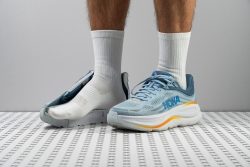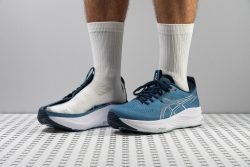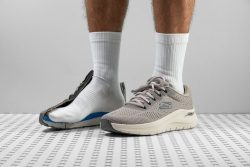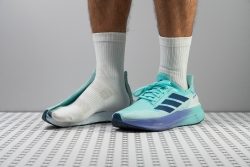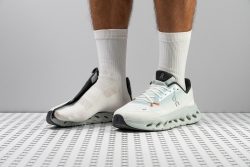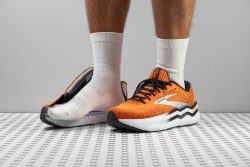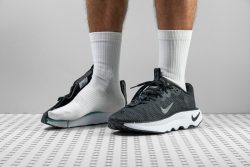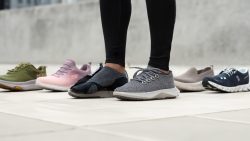7 Best Cushioned Walking Shoes in 2025
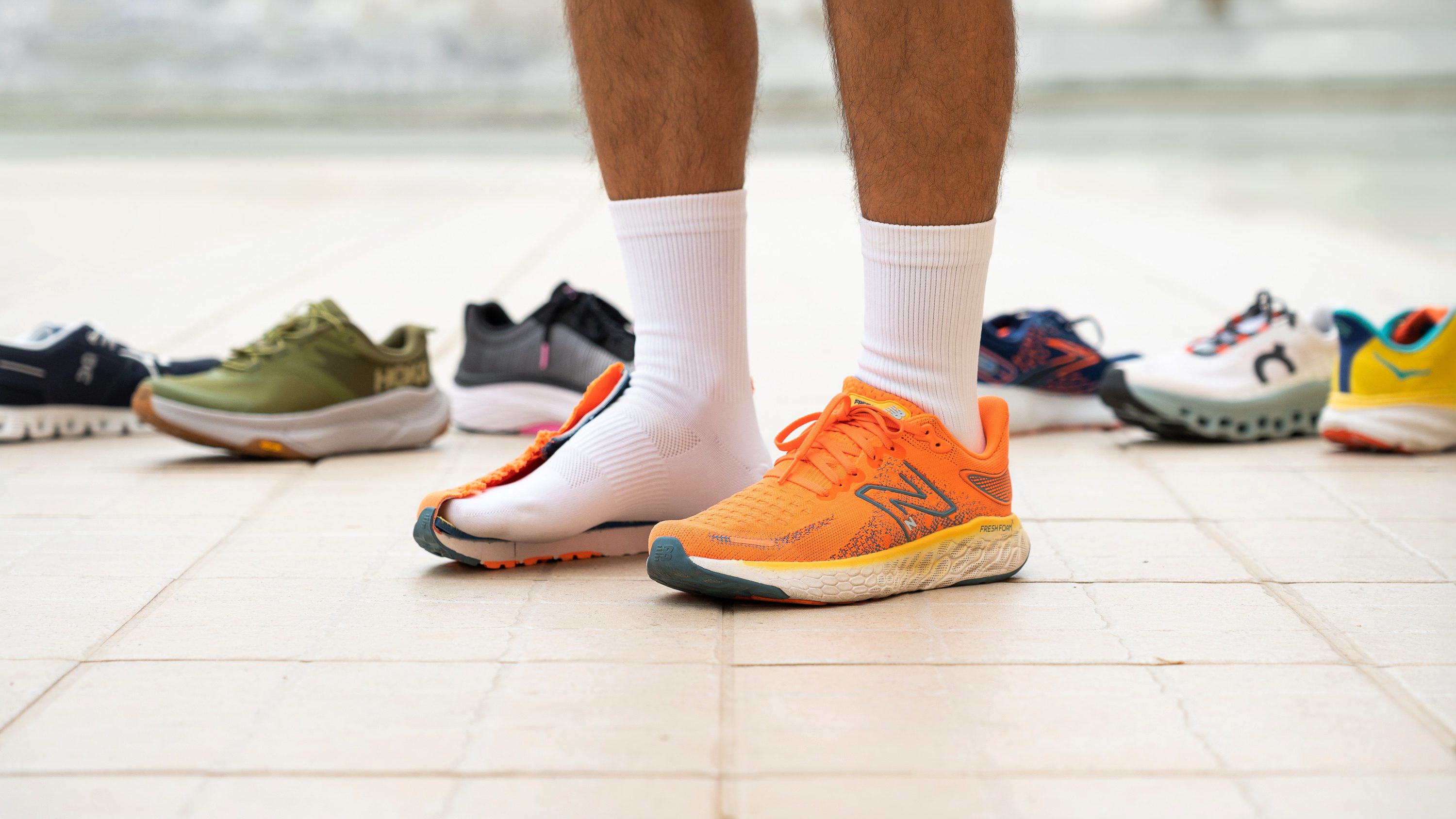
We buy shoes ourselves. We earn commissions when you buy through us, at no extra cost. Why trust us
What makes a walking shoe well-cushioned? Mostly its stack height and midsole softness. But what makes the best cushioned walking shoe? It makes you feel at home even if you spend an entire day on your feet!
Having tested hundreds of walking shoes both in the lab and on the go, we know exactly which criteria make some shoes stand out from the rest when it comes to cushioned underfoot experience.
How we test cushioned walking shoes
Rounding up the finest cushioned kicks requires an unbiased set of steps. Our approach involves the following:
- Buying all walking shoes with our own money to keep our reviews objective.
- Wear-testing these shoes for extended periods of time to test their strengths and weaknesses.
- Measuring and assessing over 30 parameters of each walking shoe, from stack height and shock absorption to lateral stability and breathability. And, of course, we cut each shoe in half to get the most precise measurements.
Best cushioned walking shoes overall
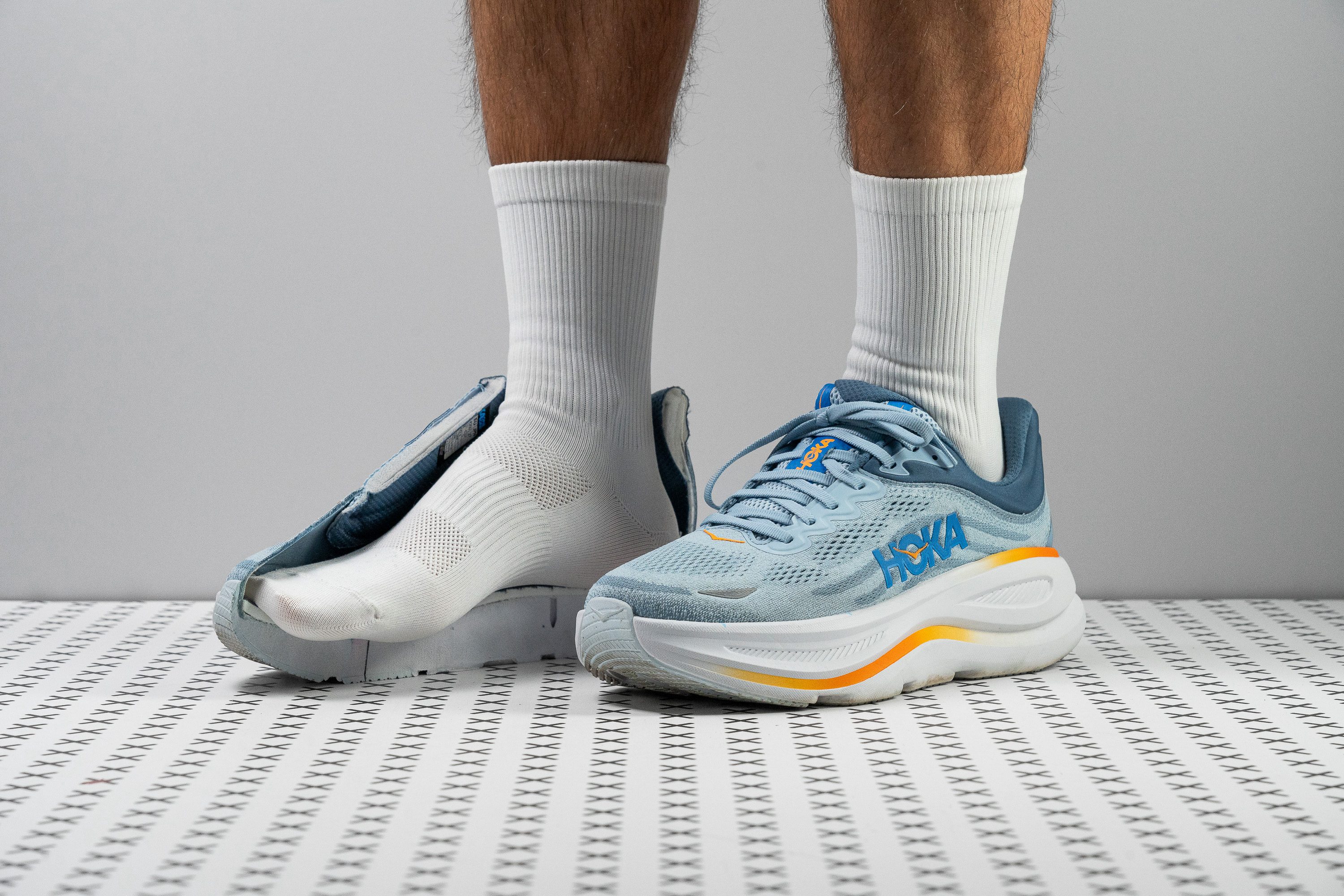

















































What makes it the best?
After logging countless hours in our lab and on foot, we decided the Hoka Bondi 9 to be our ultimate cushioned walking shoe. Its towering stack offers a remarkable combination of impact protection and bounce. But what’s even more captivating is the security and surefootedness we felt in our strolls.
Using our caliper, we measured the massive stack to be 41.3/32.2 mm, which proves there’s no shortage of foam vs. the 34.2/25.6 mm average. It feels balanced, verified by our durometer with a 25.1 HA reading, which helped us endure whole days of walking without any pain.
Although the platform noticeably elevated us from the ground, we didn’t sense any wobbly or flimsy feeling from the shoe. Instead, we experienced exceptional stability from its wide base and stiff construction. In our manual assessment, it resisted twisting, so we gave it a 4/5 torsional rigidity that effectively avoids ankle rolls. Meanwhile, the broad 123.2/100.9 mm base delivered a well-planted sensation.
The downside is, that it has limited toebox space. We hate how it may cause some unwanted pressure on certain foot shapes. Therefore, we do not advise this pair for those with wide or square-shaped feet.
Pros
- Endless cushioning
- New supercritical EVA midsole
- Amazing step-in comfort
- Doubles as a walking shoe
- Stable for its height
- Built to last
- Excels at slow-and-steady paces
- Well-designed heel collar
- Lighter than v8
Cons
- Not for wide feet
- Still feels heavy and clunky underfoot
- Drop measurement differs from stated
- Non-gusseted tongue
Cushioned walking shoes with the best stability
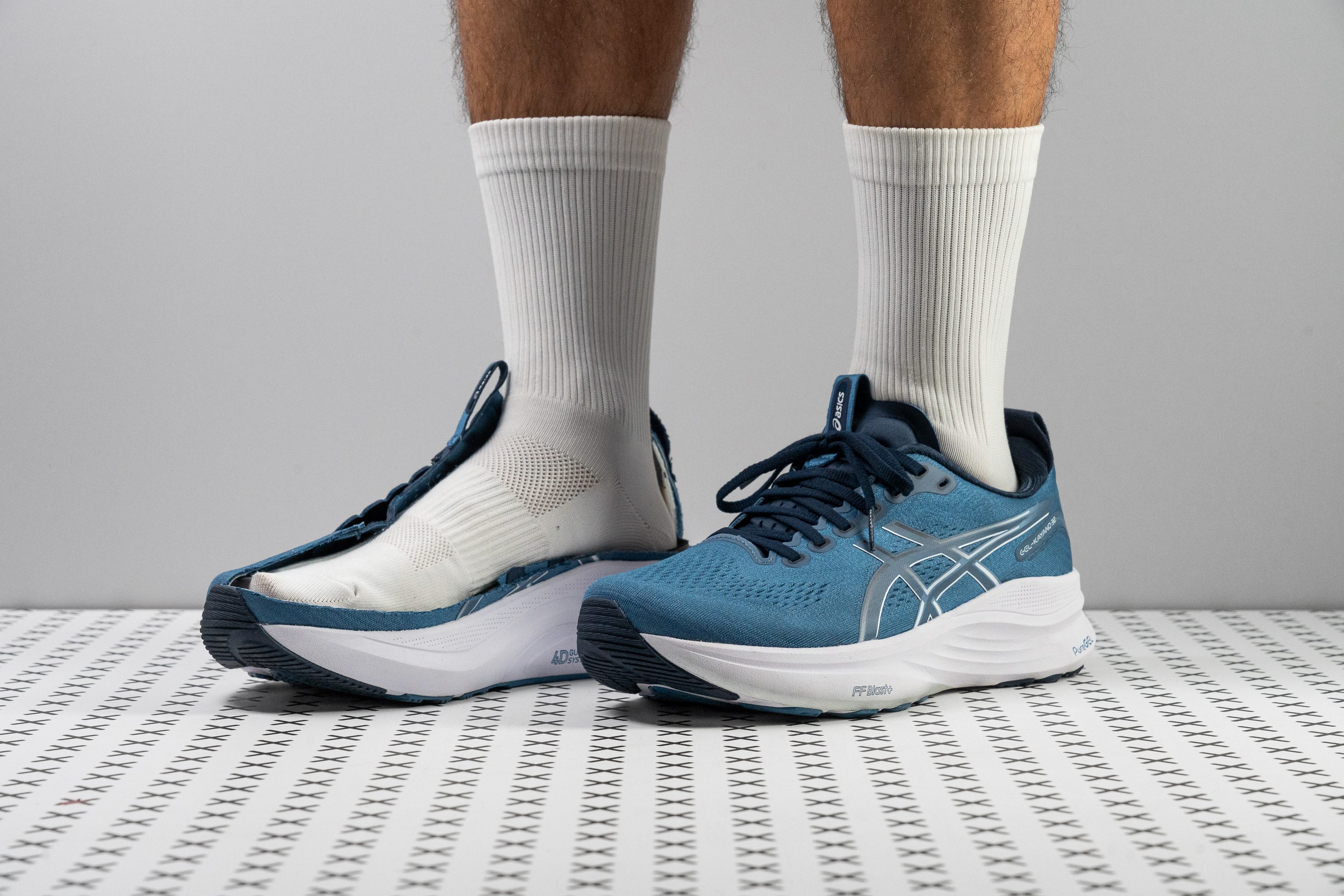













































What makes it the best?
The ASICS Gel Kayano 32 ticks the boxes of a well-cushioned shoe, shock-absorbing, and exceptionally tall. From our miles of walking, we can say this shoe stands out for its stability. In the lab, we discovered it features subtle support elements such as the 4D Guidance System while maintaining a comfortably smooth underfoot experience—a combination very few shoes can offer.
The 4D Guidance offers integrated support and adapts to our movements. In addition, the shoe features midsole sidewalls to secure our steps. Our feet had a lot of room to find our footing, and it strongly resisted ankle twists, evidenced by its maximum 5/5 torsional rigidity score.
Moving to the cushioning, our caliper shows a generous 39.9/30.6 mm stack height. This substantial foam effectively erases ground feel, and we reveled in its exceptional impact protection, as verified by high shock absorption scores of 133 SA in the heel and 116 SA in the forefoot. Softening the blow further is the PureGEL layer, keeping our feet safe and happy.
Surprisingly, all the support and cushioning maintained a decent weight of 10.4 oz (295g). However, we believe this could be trimmed down further if the outsole weren’t 4.5 mm thick, especially since it proved to be wear-resistant in our Dremel test.
Pros
- Amazing shock absorption
- Plush and breathable upper
- Made to last
- Dependable for most pronators
- Heavy-duty outsole with excellent grip
- Stable as a table
- Pillow-soft heel padding
- Improved fit
- Excellent build quality
Cons
- Not for soft-foam lovers
- Bad energy return
- Overpriced in Europe
Cushioned walking shoes with the best shock absorption
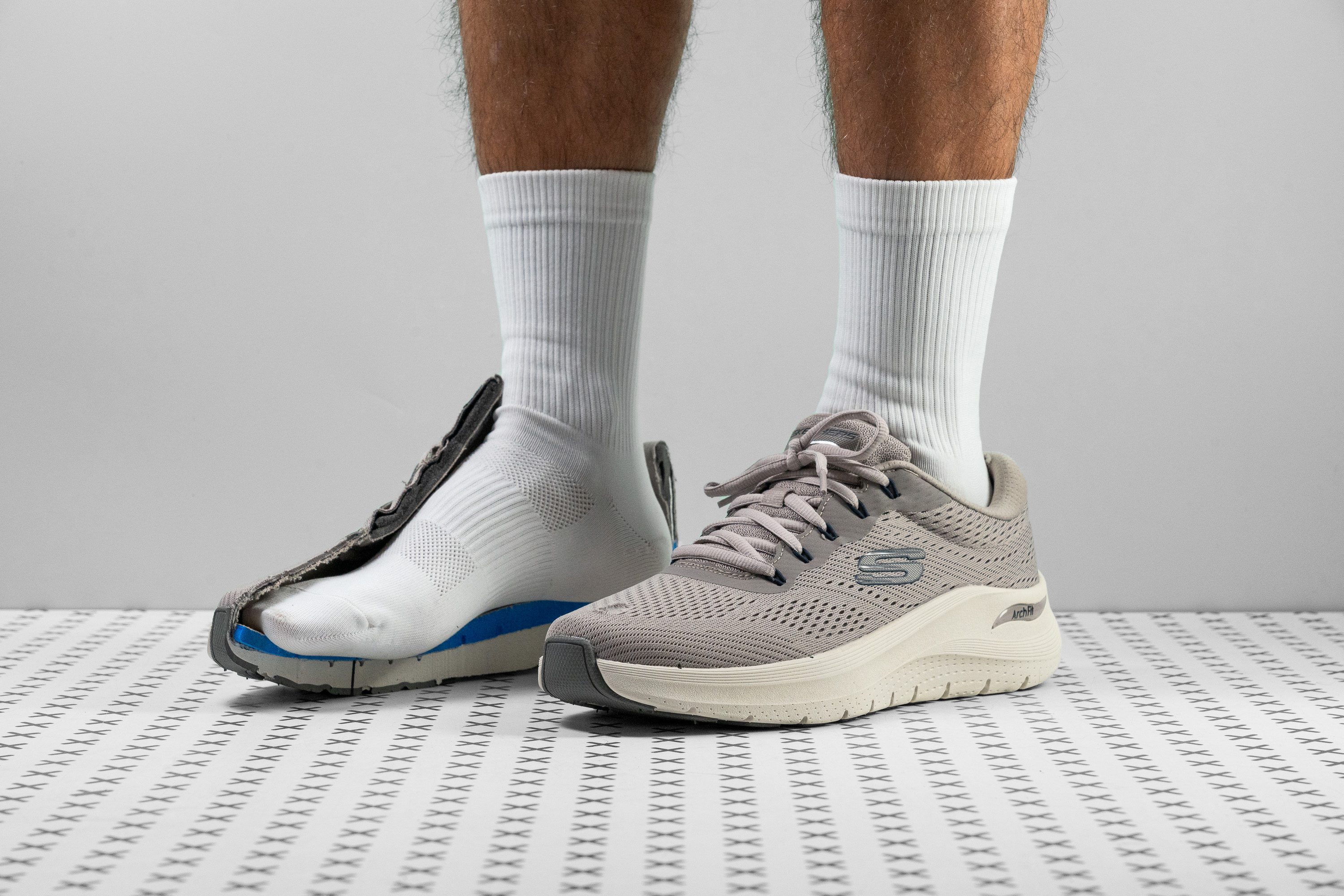














































What makes it the best?
Revealing what’s to come, Skechers Arch Fit 2.0 lives up to its name, providing maximum cushioning and exceptional arch support that perfectly contours to our feet during testing. These standout features make it our lab-tested cushioned walking shoe with the best shock absorption.
The amount of foam and comfort this shoe brings exceeds its $90 value. Our caliper reveals the heel is elevated to a sky-high 39.2 mm, leaving us on cloud nine with no pain and ground feel. We tested for its shock absorption in the heel and recorded 134 SA, meaning it offers 20.7% better impact protection than average. The gentle cushion, plus its steep 15.2 mm drop, reduces stress on our heels and arches.
Its reinforcing support is felt through its vast base, guiding our foot alignment in a subtle yet effective manner. We measured the platform to be wide indeed at 114.5 mm in the forefoot and 90.9 mm in the heel, promoting a stable ride.
However, if breathability is a priority, we recommend disregarding AF2 as it feels too stuffy for warmer seasons. Our smoke test reveals a lack of airflow with its low 2/5 rating.
Pros
- Amazing support for overpronation
- Tons of cushioning
- Wide and stable platform
- Lighter than the Arch Fit 1.0
- Perfect for all-day wear
- Padded and cozy interiors
- Great traction on wet and dry surfaces
- True to size
Cons
- Very poor breathability
- Lacks durability
Best cushioned walking shoes for wide feet
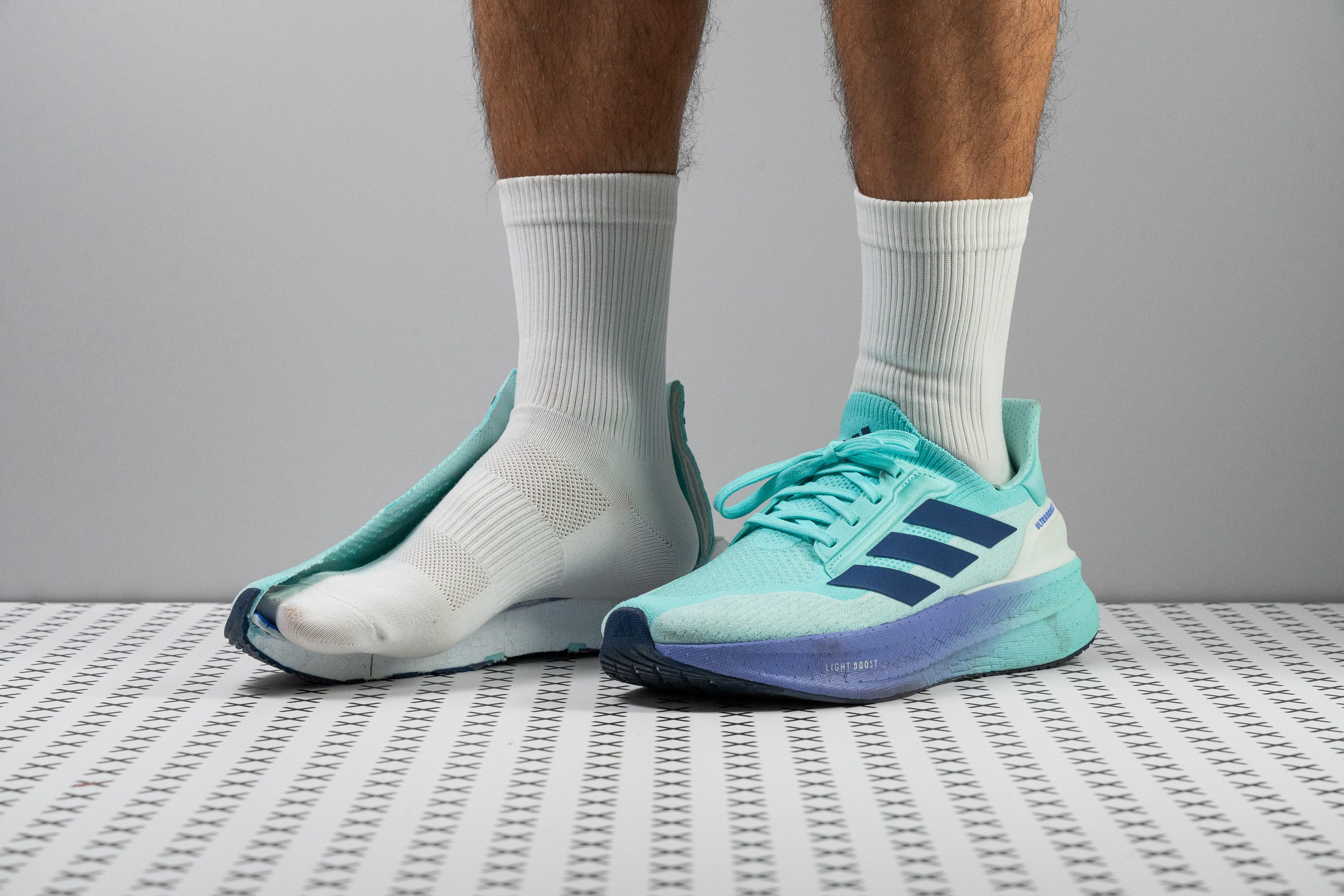
















































What makes it the best?
Our wear tests with the Adidas Ultraboost 5X made us feel at home with its cozy embrace, particularly its comfortable upper, luscious platform, and flexible midsole. Our lab results show it features a spacious toebox, paired with the stretchy Primeknit upper that accommodates various foot shapes, making it our best-cushioned walking shoe for wide feet.
The toebox felt roomy, and our caliper shows its minimal taper to the front. In the big toe area, it measures 75.4 mm vs. the 73.7 mm average. The soft Primeknit upper sits atop our feet and expands to avoid any pressure points.
Beneath us is the bouncy and soft Light Boost cushioning. It offers good impact protection with its 34.6/24.2 mm stack. We pushed our durometer against it and found it to be a softer-than-average 16.4 HA. However, it feels more balanced than the reading suggests — a welcome change since it boosted our stability.
During our strolls, it adapted freely to our strides, which lessened fatigue. Our bend test shows it requires less force to move in this pair since it’s 27.4% more flexible than average.
Unfortunately, it sits at a high $180 price point. Other shoes can offer a similar experience at a more accessible rate.
Pros
- Works well as a casual sneaker too
- Premium, high-quality materials throughout
- Stretchy, roomy upper
- Fantastic energy return
- Built-to-last durability
- Best Ultraboost version to date
- Stable for heel strikers
- Increased stack height
- Noticeable weight reduction
- Grips very well
Cons
- Steep price
- Ventilation falls short of expectations
- Limited to slower paces
- Less stack height than advertised
Best lightweight cushioned walking shoes
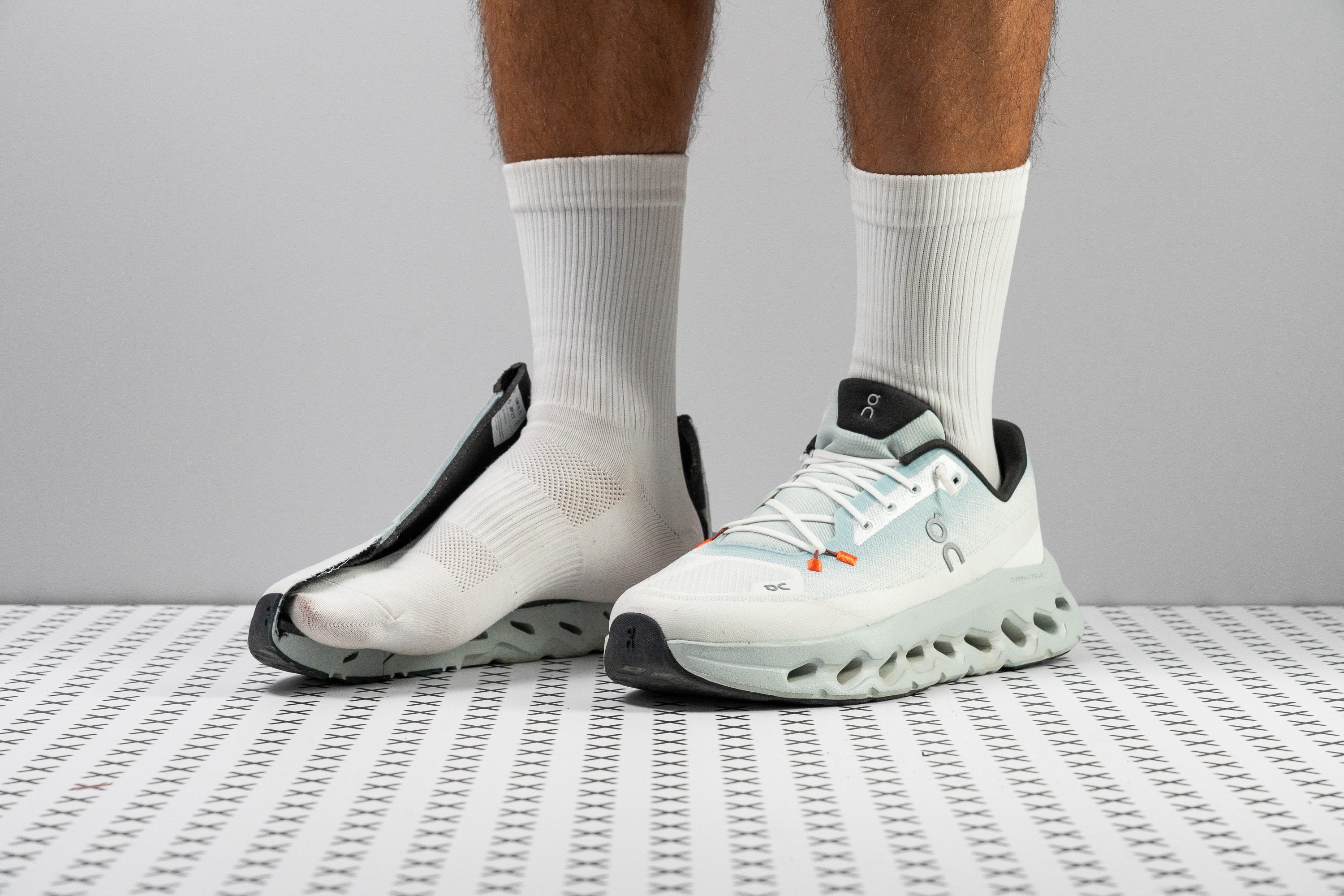






















































What makes it the best?
In our search for the best lightweight cushioned walking shoe, we looked for a shoe that offers generous comfort, despite its weightless build. As we pushed the On Cloudtilt to its limits in the lab and on our feet, we realized it dominates the lightweight cushioned category. Besides its ultralight construction and luscious base, it’s surprisingly stable too!
As we started strolling with the Cloudtilt, it moved in motion with our feet. True enough, when we put it on our scales, we measured its weight at 9.4 oz (266g), 7.0% lighter than the average walking shoe.
We’re amazed how it managed to maintain its figure despite its 35.5/26.8 mm stack, which our caliper confirms is above average. The cushion has a cozy underfoot sensation, verified by our durometer with a low 20.2 HA, 23.5% softer than average. In addition, the CloudTec compression enhances softness and bounce.
Another thing we enjoyed with Cloudtilt is mindlessly walking because it’s actually stable. It secured our footing through its wide 117.7/96.7 mm base, ensuring we felt safe and well-planted.
What we didn’t like was how we started to overheat on our summer strolls. With its poor breathability (2/5), we recommend using the Cloudtilt for cooler conditions only.
Pros
- Plenty of cushioning for long hours on feet
- Soft yet bouncy ride
- Feels nice and light on foot
- Abrasion-resistant upper and outsole
- Wide and steady platform
- Excellent outsole grip
- Easy on-and-off with bungee laces
- Upper made of recycled material
Cons
- Not very breathable
- Flimsy inner lining and insole
Best breathable cushioned walking shoes
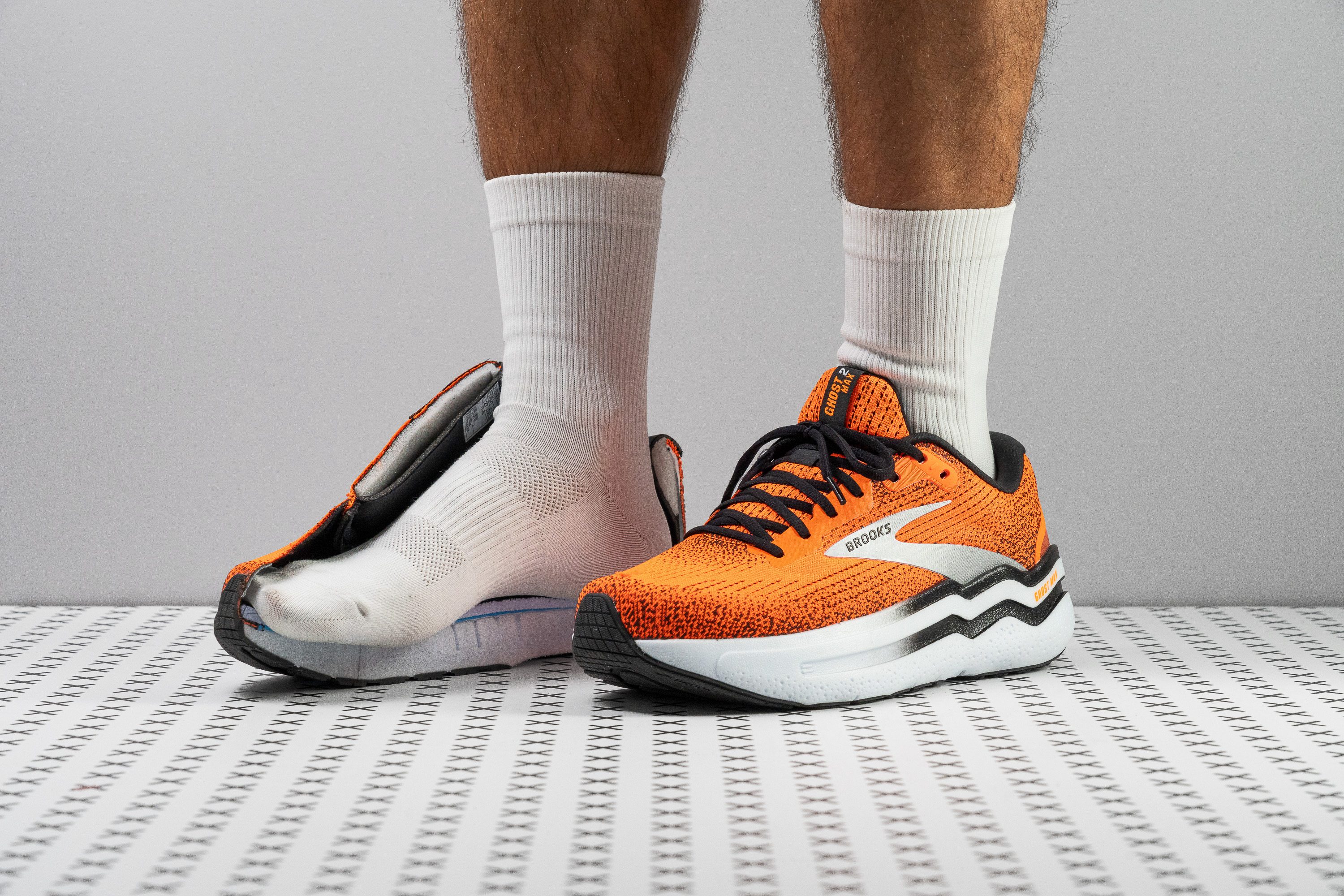





















































What makes it the best?
The Brooks Ghost Max 2 has a cool and refreshing aura that kept us reaching for it over and over during hot and humid days. With our lab results verifying its springy yet stable platform, it feels good on foot even for long hours. Among cushioned walking should, this pair stands out for its unmatched breathability.
We instantly enjoyed the wind beneath our toes, there was no way sweat or body heat could build up. In the lab, the smoke we pumped into the shoe instantly escaped, so we rated it with a perfect breathability rating.
Comfort is a no-brainer with the stack’s massive 39.0/29.1 mm height. With that much cushioning beneath our feet, we’re spoiled with a highly protected ride. The foam is well-balanced and at par with our lab average with its 20.6 HA reading.
We also measured the broad base, which offers confidence-inspiring surefootedness. Compared to the 114.1/90.6 mm, it was easier to settle and balance in the Ghost Max 2’s wide 118.7/99.3 mm base.
Unfortunately, this shoe emerged stiffer than average in all directions. If agility is a top priority, this shoe doesn’t deliver that.
Pros
- Improved energy return
- Fantastic value
- Great durability
- Breathable upper
- Outsole grips well even in wet surfaces
- Doubles as a walking shoe
- Excels at easy paces
- Superior stability
- Ready for long runs
Cons
- Would benefit from softer foam
- Clunky for heel strikers
- A bit heavy
- Non-gusseted tongue
Best affordable cushioned walking shoes
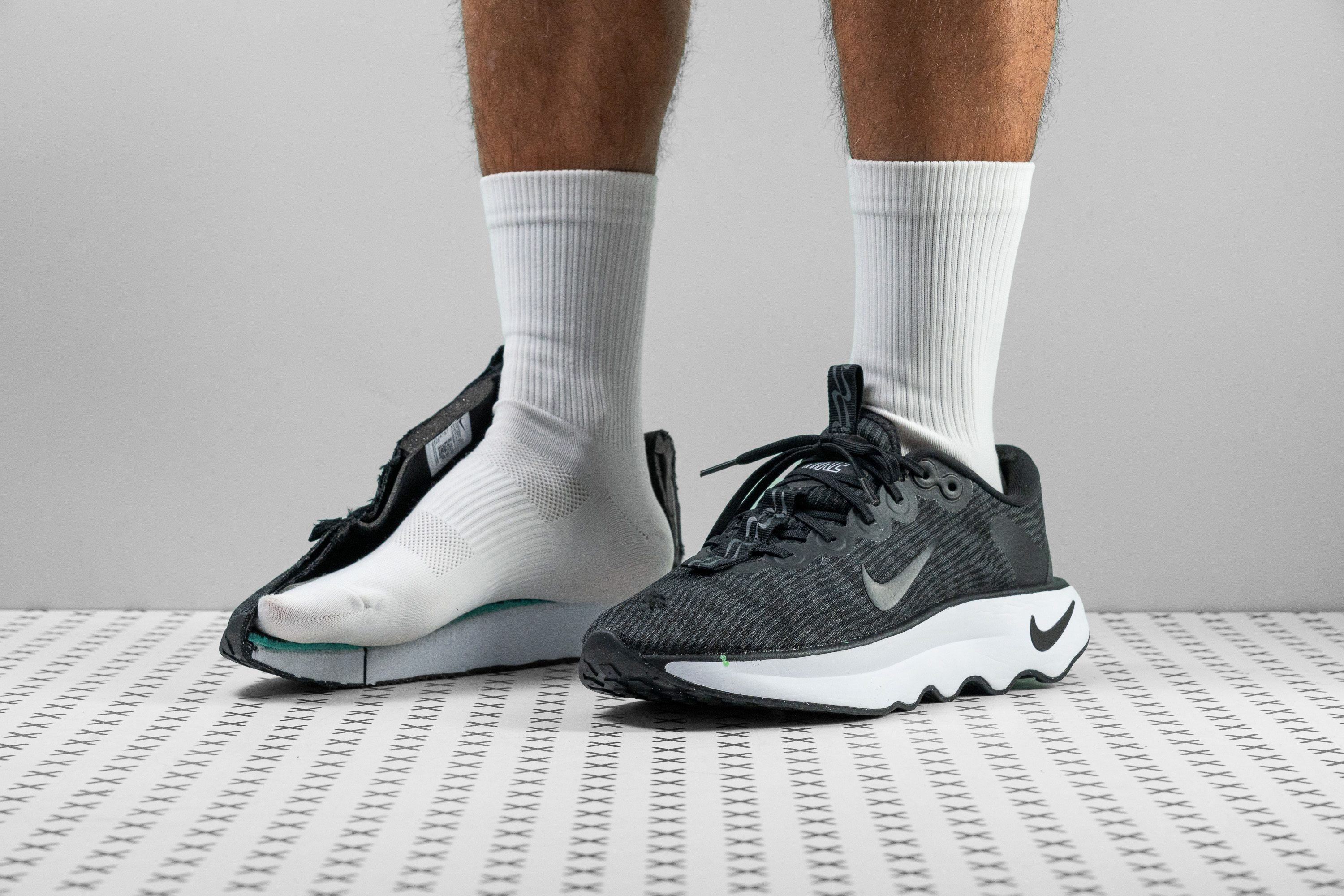















































What makes it the best?
Among cushioned walking shoes we took on wear tests, we found Nike’s Motiva to be the cream of the crop, with its plush and rockered platform delivering effortless strolls at only $110, making it our best affordable pick. Designed to provide extended comfort and reduce effort, our lab confirms its capability to facilitate pain-free walks. Additionally, Motiva features a durable outsole to withstand extensive mileage.
The bottomless cushioning is our main source of relief, featuring a height of 34.9/25.6 mm with a plush composition. Our durometer confirms its cloud-like sensation with a low 15.0 HA measurement. Further enhancing comfort is the even weight distribution provided by the compression of the wave design underfoot.
Motiva’s unique geometry is undeniable, yet it truly comes alive in action, promoting seamless forward transitions with every stride. The midsole maintains a certain level of stiffness to sustain the rocking motion, and our bend test confirms Motiva is 7.0% more rigid than average.
Underfoot, we saw Nike’s signature waffle pattern that effectively gripped wet and dry roads. Extensive testing barely scratched the tough rubber compound, which our durometer reveals is a high 92.0 HC. At a thick 3.0 mm, we expect the shoe to outlast the average walking shoe.
However, due to its squishy composition, the sole developed wrinkles early on. However, we discovered that this had minimal impact on function, except for runners on the heavier side.
Pros
- Rocker makes for effortless walks
- Audaciously plush cushioning
- Extra lively and bouncy ride
- Out-of-the-box comfort
- Very wide and stable base
- Durable outsole
- Amazing wear resistance in the upper
Cons
- Lacks breathability for hot weather
- Sole develops wrinkles easily
- Rocker takes time to get used to
- Lacks grip on wet surafces
What is a cushioned walking shoe?
Walking is a relatively low-impact activity. But do enough of it, and the accumulation of those small impact forces begins to take its toll.
Highly cushioned walking shoes are ideal for dedicated walkers or folks with active jobs. These shoes feature above-average cushioning and often have additional shock absorption technologies to keep your joints and feet feeling good.
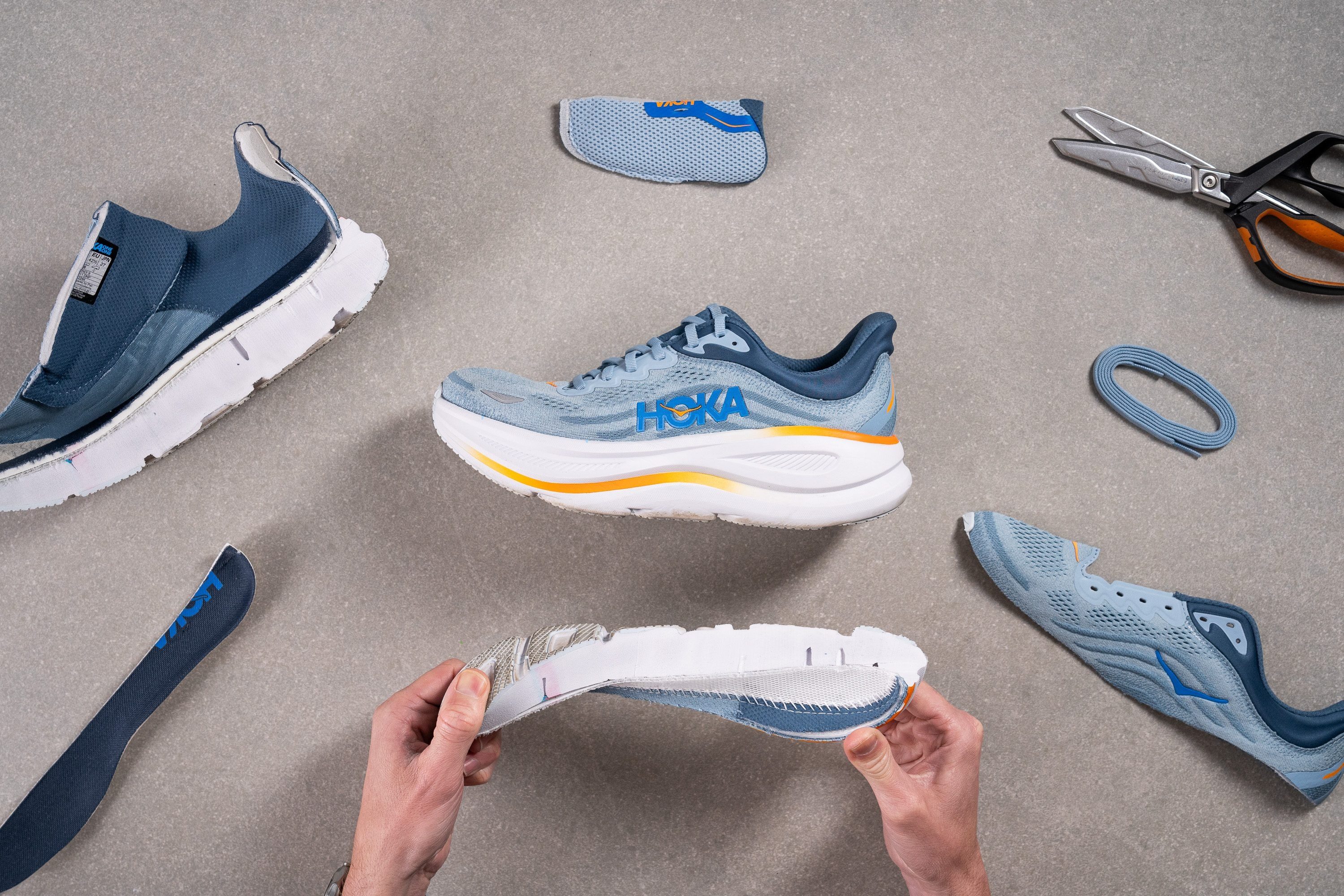
All walking shoes are cushioned to some degree unless they belong to the barefoot shoe category. But in our lab, we look for a shock absorption measurement of at least 100 SA in the heel.
To keep our data science-backed, we follow the industry's recognized ASTM F1976 standard for measuring shock absorption.
We also expect to see at least 30 mm of heel stack to tag the shoe as cushioned.
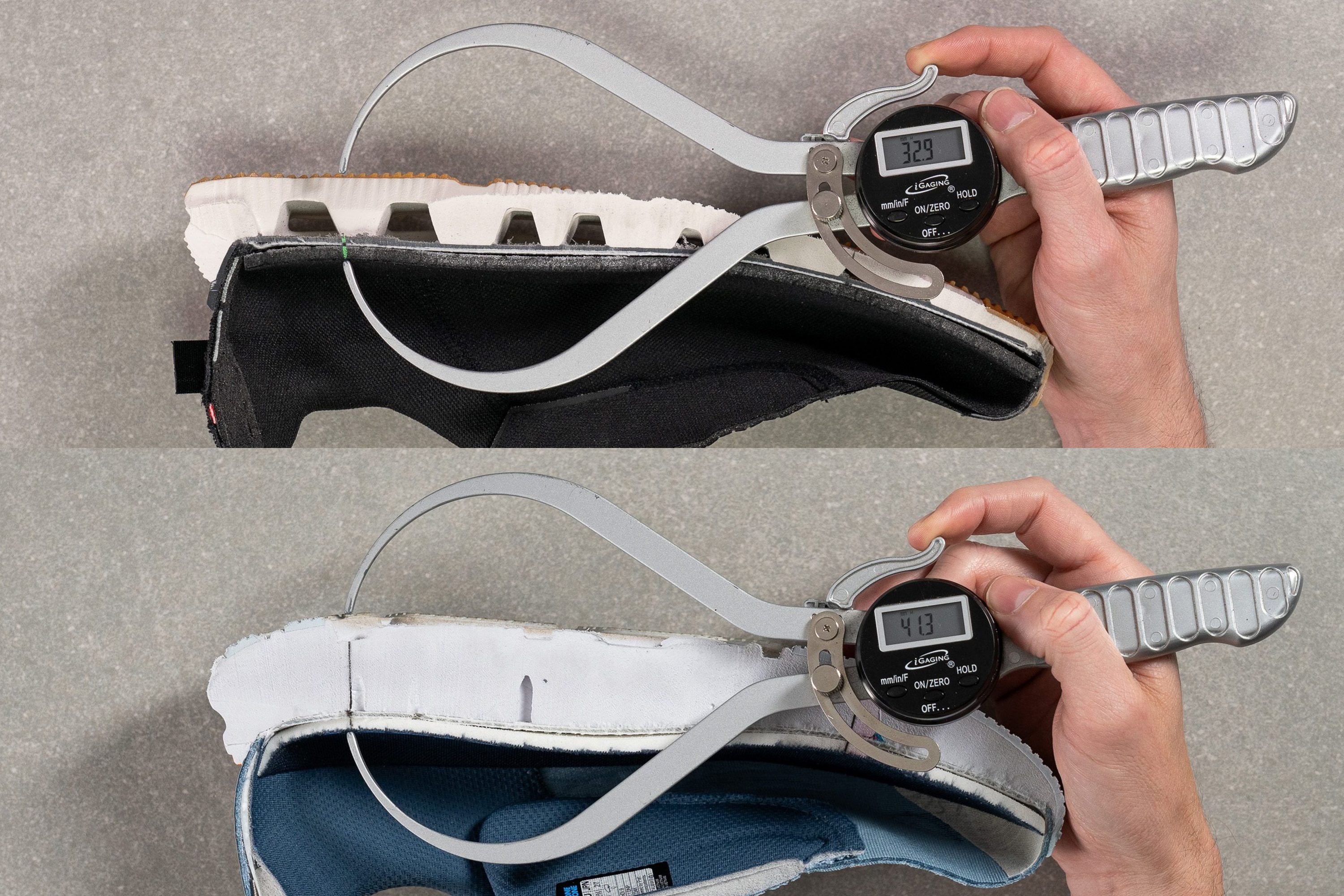
However, most major athletic brands like HOKA, Brooks, New Balance, ASICS, Nike, and Adidas are taking their shoe cushioning to another level by releasing models with stack heights of 35-40 mm and even beyond 40 mm!
Cushioned vs. comfortable
Cushioning is often used synonymously to describe the comfort of walking shoes, but the two are not necessarily the same. It is possible to have cloud-like, maximally cushioned walking shoes that simply don’t work with your feet.
It could be ill-fitting (causing hot spots, rubbing, and blisters), lacking arch support (too wobbly and unstable), or too warm. While good cushioning is essential, is not the only factor that makes a shoe comfortable.
Cushioned vs. padded
A shoe can be padded or not, regardless of its underfoot cushioning. Padding implies the amount of foam packed into the shoe’s tongue, heel collar, insole, and interiors overall.
But most of the time, a cushioned walking shoe will also be padded because that’s what makes it more comfortable overall. And that’s the whole point of cushioned walking shoes.
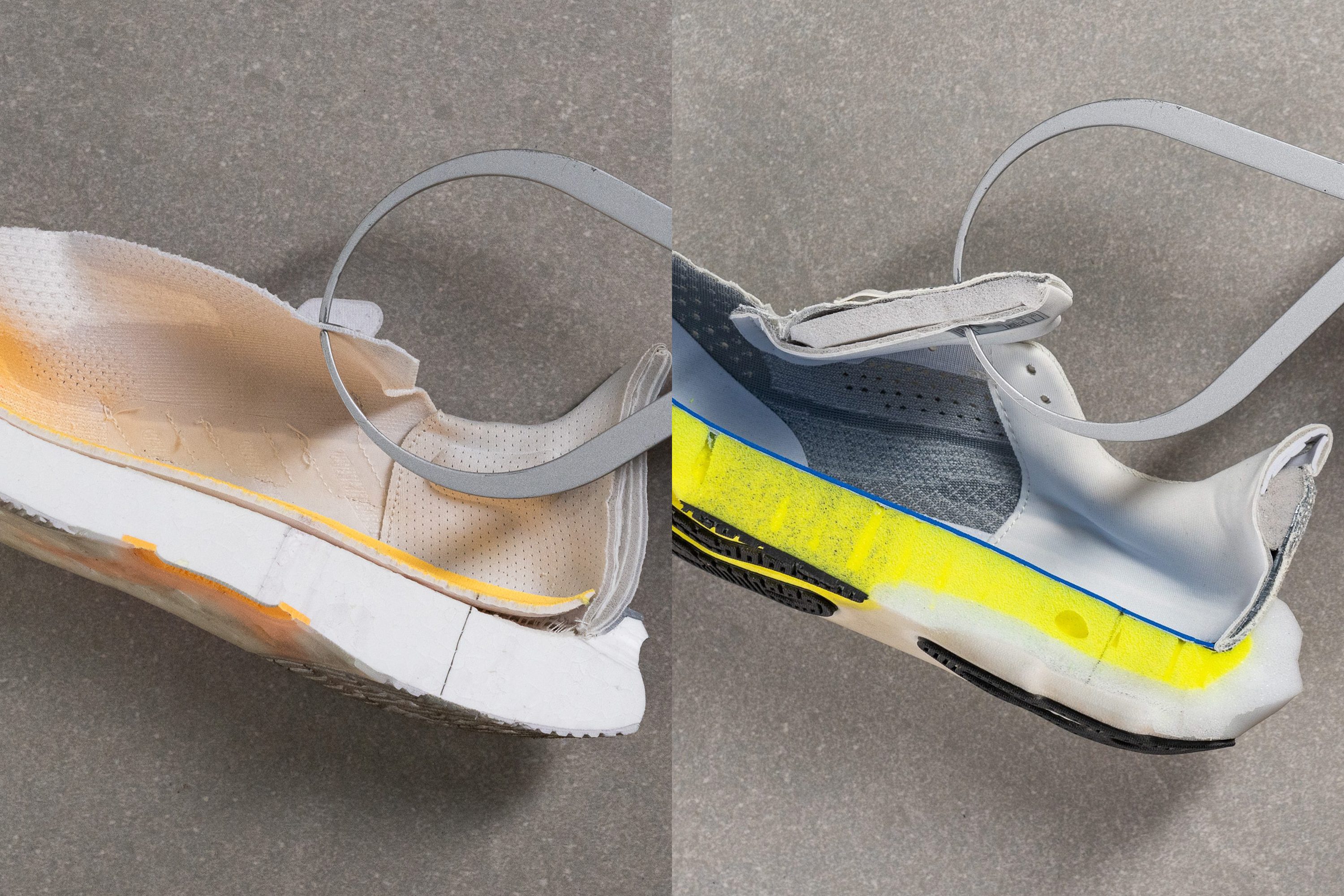
Cushioned vs. soft
Most of the time, a thick-foamed walking shoe is going to feel soft and compressible too.
But depending on the cushioning foam they use, some shoes will be ultra-plush while others will be more balanced or even firm!
Stack height in walking shoes: how much cushioning do you need?
Stack height refers to the thickness of a shoe's sole including the insole, the foam midsole, and the rubber outsole.
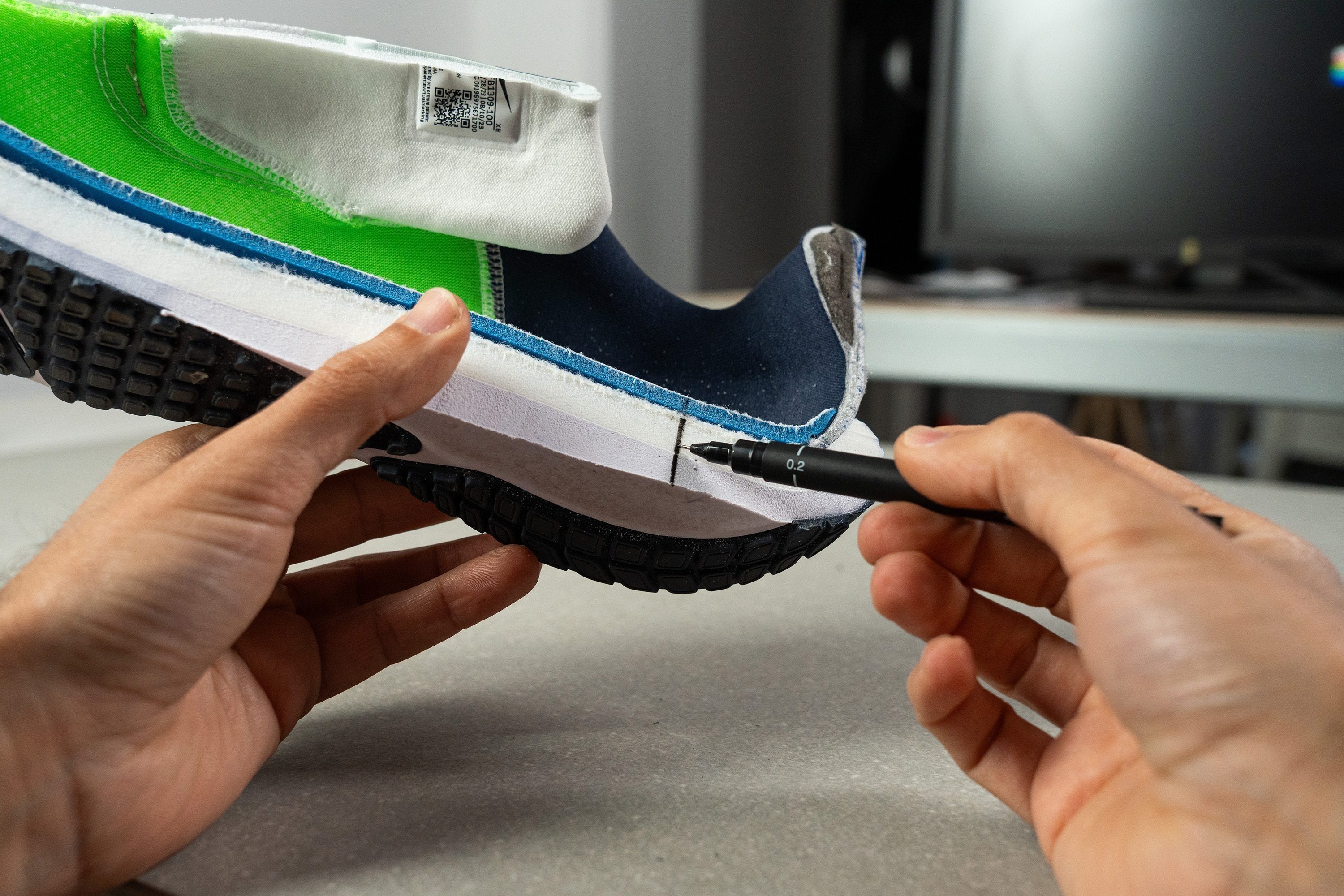
In our lab, we cut each shoe in half and use a digital caliper to measure its stack height following the rules set by World Athletics. The forefoot stack is measured at 12% of the shoe’s length while the heel stack is measured at 75%.
Having tested hundreds of shoes, we found that the average heel stack of walking shoes (and running shoes that can be used for walking) hovers around 33.5 mm. This is, in fact a few millimeters thicker than what it used to be a decade ago (25-30 mm on average).
The increase occurred due to the rise of max-cushioned shoes with a stack height of 35 mm or more. These days, you can even find extremely thick-foamed shoes with a heel stack as high as 45 mm!
So how much stack height do you need? Even though it’s a matter of personal preference, there are a few general recommendations on choosing one over the other.
Who will benefit from less stack?
- People with gait abnormalities or instability while walking should choose more grounded shoes to lower the risk of ankle rolling and foot twisting.
- Folks with severe overpronation (excessive inward rolling of the foot) who need more stability. Learn more in our guide on walking shoes for overpronation.
- Walkers who simply prefer a better ground feel.
Who will benefit from more stack?
- People who spend long hours walking and standing on concrete (or any other hard surface).
- Heavier persons will appreciate the added shock absorption. But make sure that the foam is not overly plush and compressible. Also, check that the shoe’s heel is wide enough to keep you stable. To learn more, see our guide on the best walking shoes for heavy people.
- People with heel pain (like plantar fasciitis or heel spurs) should go for a higher heel stack to minimize impact on this area.
- People with ball of foot pain (like metatarsalgia or Morton’s neuroma) should choose walking shoes with a higher forefoot stack.
- Senior folks with fat pad atrophy (when the natural foot padding wears out with age) are better off with a more cushioned and padded shoe as well.
Here is an overview of the most cushioned walking shoes in our lab:
Cushioning softness and foam types in walking shoes
The type of midsole foam and its characteristics play an even bigger role in cushioning than the stack height of any given midsole. Think of platform sneakers which have very thick yet firm soles.
Traditionally, brands have been relying on EVA (ethylene-vinyl acetate) and PU (polyurethane) to make midsole foams. But footwear technologies have evolved rapidly in the past few years bringing a ton of proprietary foam blends to the market.
These new foams are significantly lighter, softer, and more responsive thanks to innovations like supercritical fluid foaming, which injects nitrogen gas into foams to improve impact absorption without adding weight. Initially introduced in running shoes, these advancements quickly transitioned to walking shoes thus leveling up all-day comfort and impact protection.
Difference in foam softness
In our lab, we use a Shore A durometer to measure the foam softness of each walking shoe - the lower the HA reading, the softer the foam:
- Soft: less than 20 HA
- Balanced: 20-30 HA
- Firm: 30 HA or more
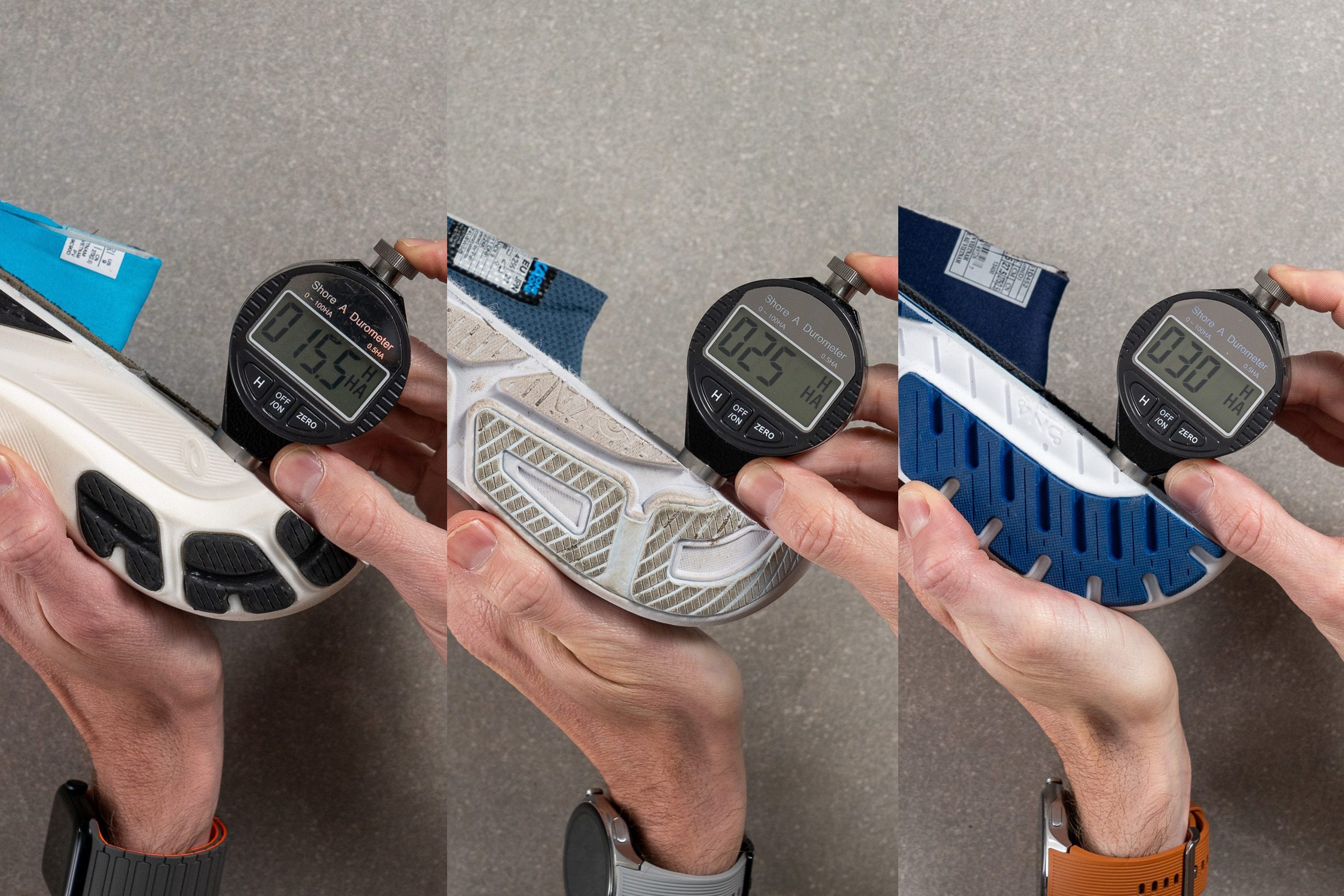
Soft cushioning
If you live for that marshmallowy-plush and cloud-like underfoot experience, go for a soft-foamed walking shoe.
Example of soft cushioning (14.5 HA)
This category includes shoes with the most acclaimed cushioning technologies like the Nike ZoomX, Adidas Boost, New Balance Fresh Foam X, Brooks DNA Loft/Tuned, and ASICS FF Blast/Blast+, among others. In addition to being very soft and compressible, they also have excellent energy return which adds a touch of bounce to your step. On the downside, these shoes can be more expensive too.
And if you’re wondering what ultimate plushness feels like, here is the overview of the softest walking shoes we ever tested:
Balanced cushioning
If you enjoy all things in moderation, a shoe with balanced cushioning will treat you to a moderately soft experience.
Example of balanced cushioning (26.6 HA)
This is the largest category of walking shoes which includes numerous options from dozens of brands in different price ranges. It’s a perfect middle ground.
Firm cushioning
Very few cushioned shoes are actually firm but you can find stability walking shoes with pretty dense midsoles. These shoes are designed to provide additional support for flat feet, overpronation, diabetes, and other conditions that call for increased stability.
Example of firm cushioning (30.1 HA)
Low temperatures can affect cushioning softness
Have you ever noticed your shoes getting firmer on a chilly day? That’s not just your imagination.
Having kept each tested shoe in the freezer for 20 minutes, our durometer measurements confirmed that cushioning foams get 27% firmer on average! But the range actually goes from only 2% (the change is hardly noticeable) to 80% (the shoe basically turned into a brick).

So if you are choosing a shoe for colder climates, you might as well consider its post-freezer softness measurement. Here is an overview of midsole softness changes in the most popular walking shoes in our database:
Energy return in the cushioning of walking shoes
While shock absorption shows how much impact is absorbed by the shoe's midsole, energy return reflects the percentage of energy that is rebounded back to the wearer.
The energy return of 45-55% is considered average for the walking shoe category. Shoes with a lower percentage (less than 45%) have more of a flat and static ride, but they feel more stable and predictable in return.
On the other hand, shoes with a higher energy return (55% or more) provide a more dynamic and springy ride, adding pep to your step and making heel-to-toe transitions feel effortless.
And if you are a power walker or someone who loves a sense of perpetual bounce underfoot, you might as well consider cushioned running shoes. These are packed with the most advanced cushioning technologies, elevating their energy return as high as 80% in some shoes!
Arch support in cushioned walking shoes
While the shoe’s cushioning is critical for shock absorption, it is not the only feature that helps to lessen the impact forces on your feet and legs. Another important component is arch support.
Your foot arch is meant to distribute pressure evenly during the walking gait cycle. But if it happens to be low (or flat), it results in a biomechanic malfunction. This is when you experience overpronation (excessive inward rolling of the foot) or even pain in the feet, knees, and lower back.
In this case, an overly thick and plush cushioning can only make things worse and you need a shoe with additional supportive components to feel comfortable.
Example of a supportive walking shoe.
Choosing the right walking shoe for your foot condition involves more considerations than cushioning alone. See our guides on the best walking shoes for flat feet and overpronation as well as plantar fasciitis to learn more.
Here is a brief overview of the best-rated walking shoes for various foot conditions:
Rocker-bottom cushioned walking shoes
Sole geometry is another major contributing factor to the shoe’s overall ride and feel. And there is a good reason why rockered shoes have gained so much love and popularity recently.
Resembling a rocking chair motion, a curved sole encourages a smoother and more effortless rolling of the foot from the heel to the toes.
On another note, cushioned shoes with a high forefoot stack are notably less flexible. A rockered sole shape (or toe spring) helps to compensate for the lack of forefoot bend.
Even though the rocker-bottom shoe design was originally patented in the early 1990s, it wasn’t until 2020 that it became so widespread. First popularized by HOKA, you can now get rockered shoes from nearly every athletic brand.
In fact, you can choose from a great variety of toe rocker shapes and angles. Some are very mild while others have more extreme curves.
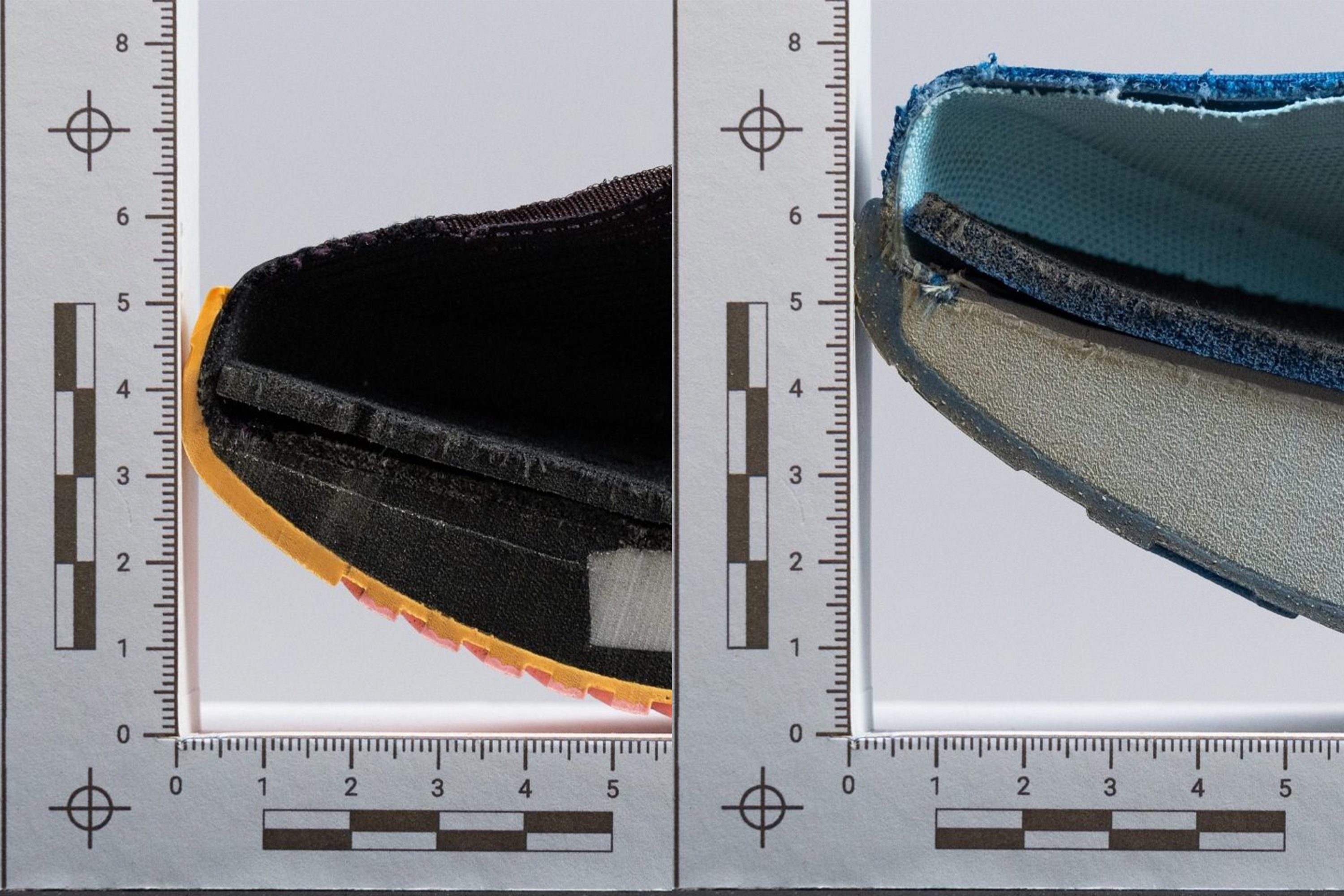
Both research and anecdotal evidence show that rocker-bottom shoes are particularly beneficial for:
- Achilles tendinopathy (due to reduced load on the Achilles tendon)
- Toe or forefoot pain, like Morton’s neuroma (thanks to reduced toe bending)
- Plantar fasciitis (but as part of a broader treatment plan including taping and orthoses)
But please keep in mind that a rockered shoe is not a cure-all either. Actually, it is less than ideal for:
- Gait abnormalities and walking instability
- Knee-related problems (i.e. runner’s knee, jumper’s knee, meniscus tears, etc.) because rockered shoes shift pressure away from the foot and up to the knee joint.
- Obese people with heel pain and/or foot arch flattening (due to increased overload at heel and midfoot regions)
Another problem with the regular use of rockered shoes is the potential risk of weakening foot muscles in the long term.
See our comprehensive research for more information on rockered shoes.
Shoe weight: Are more cushioned shoes heavier?
In the past, a thicker shoe would almost always imply added weight. That’s because brands used very similar foams (EVA and PU) and bulky cushioning technologies for added impact protection.
But the tables have turned since then.
You can find walking shoes with a heel stack of 37 mm that weigh as little as 8.5 oz (242g)! Conversely, there are shoes with a heel stack of only 26.5 mm that tip the scale at 11.0 oz (315g).
It’s the quality of materials and design choices that define a modern walking shoe’s weight. Not so much the amount of foam.
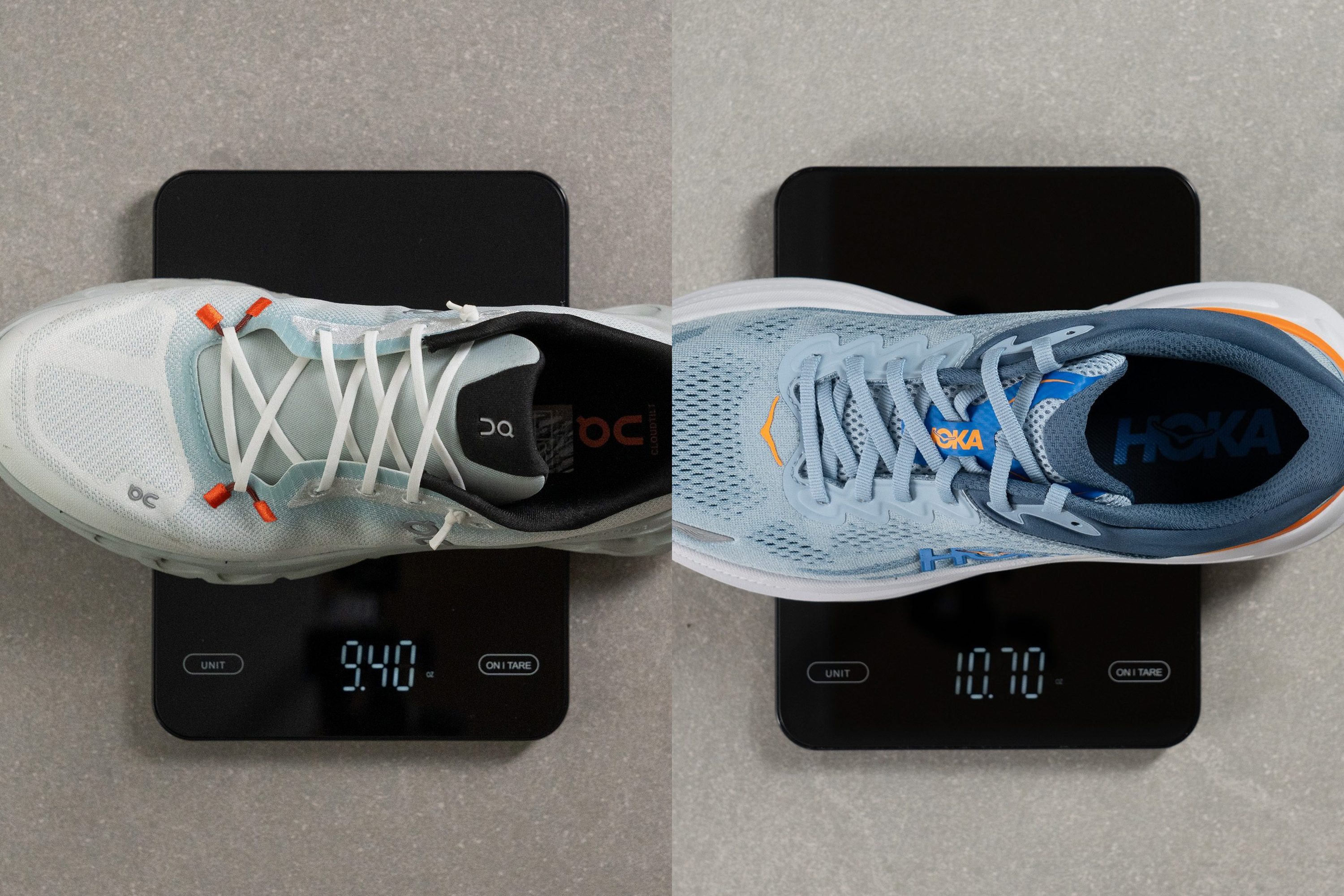
Here is an overview of max-cushioned yet lightweight walking shoes:
Cushioning durability: 3 signs you need a new walking shoe
Most people keep wearing their shoes well past the “expiration date.” Even with holes in the upper and completely worn-out rubber outsoles. But did you know that the shoe’s cushioning properties often die sooner than those visible signs of wear appear?
Here are three indications that your walking shoe has lost its cushioning and is no longer damping the impact as effectively:
- You have logged 500+ miles (800+ km) in this pair. Various studies show that this is a critical mark when shoes significantly (if not entirely) lose their initial shock absobing capacity.
- Your shoe feels dead and pancake flat underfoot. You can clearly feel the difference if you try a newer shoe in the store.
- You develop new areas of discomfort, rubbing, or even pain in your feet and legs.
If you have a budget for it, consider buying two pairs of walking shoes (one should be newer and less used) so that you can feel the difference between the two and replace the older one when necessary.
Having a shoe rotation not only allows your shoes to rest and restore their cushioning (yep, they need that too!) but also helps to prevent and alleviate plantar fasciitis.

